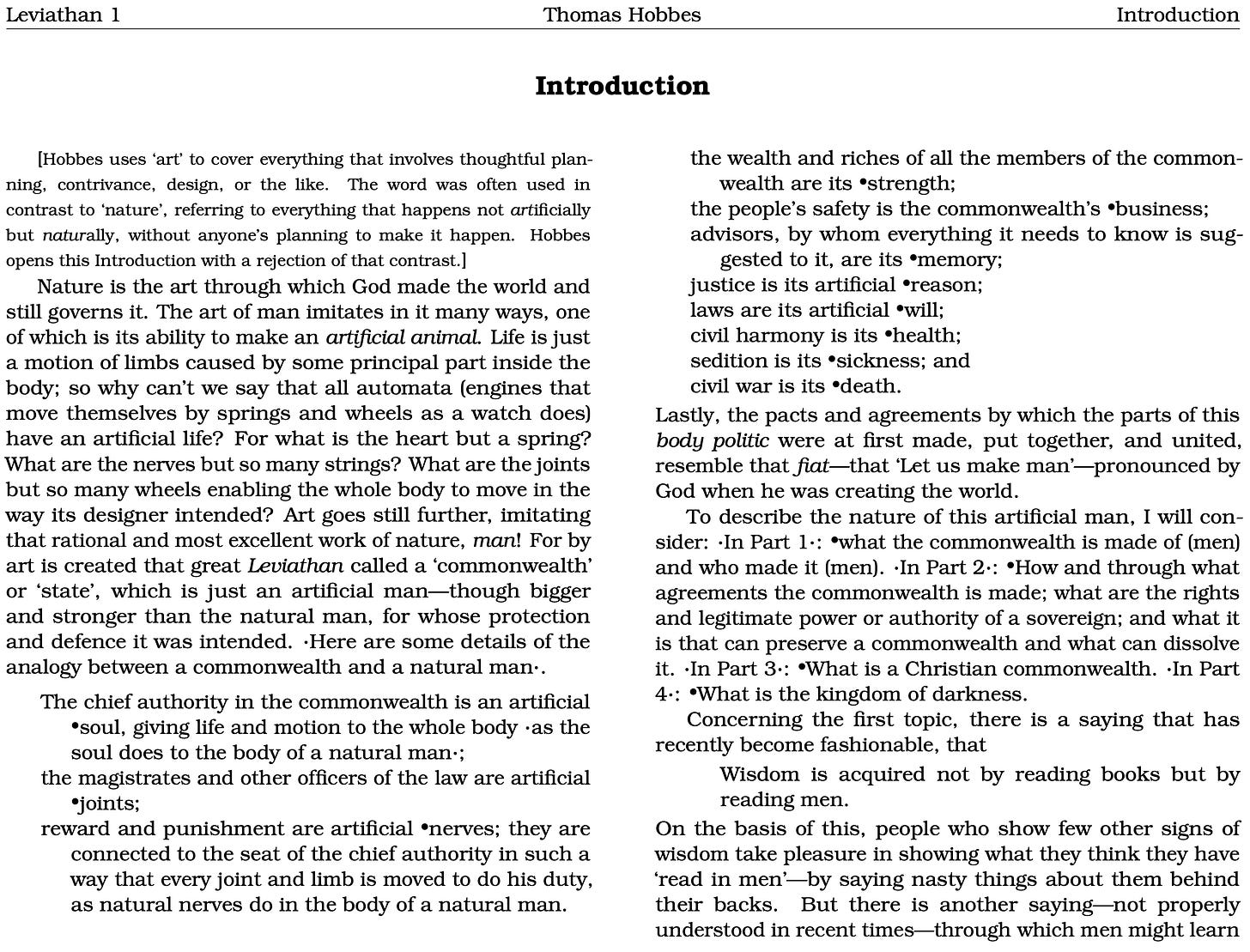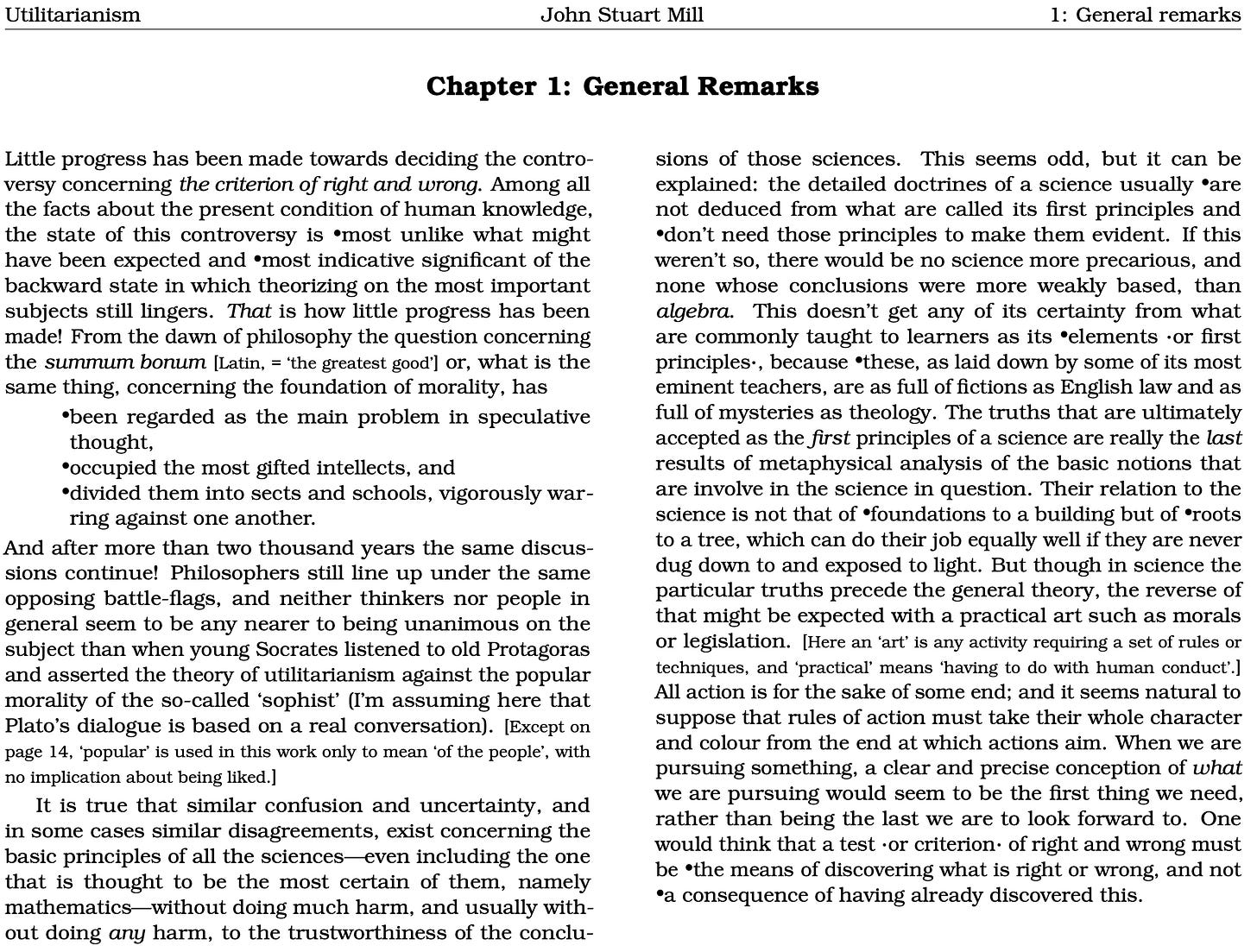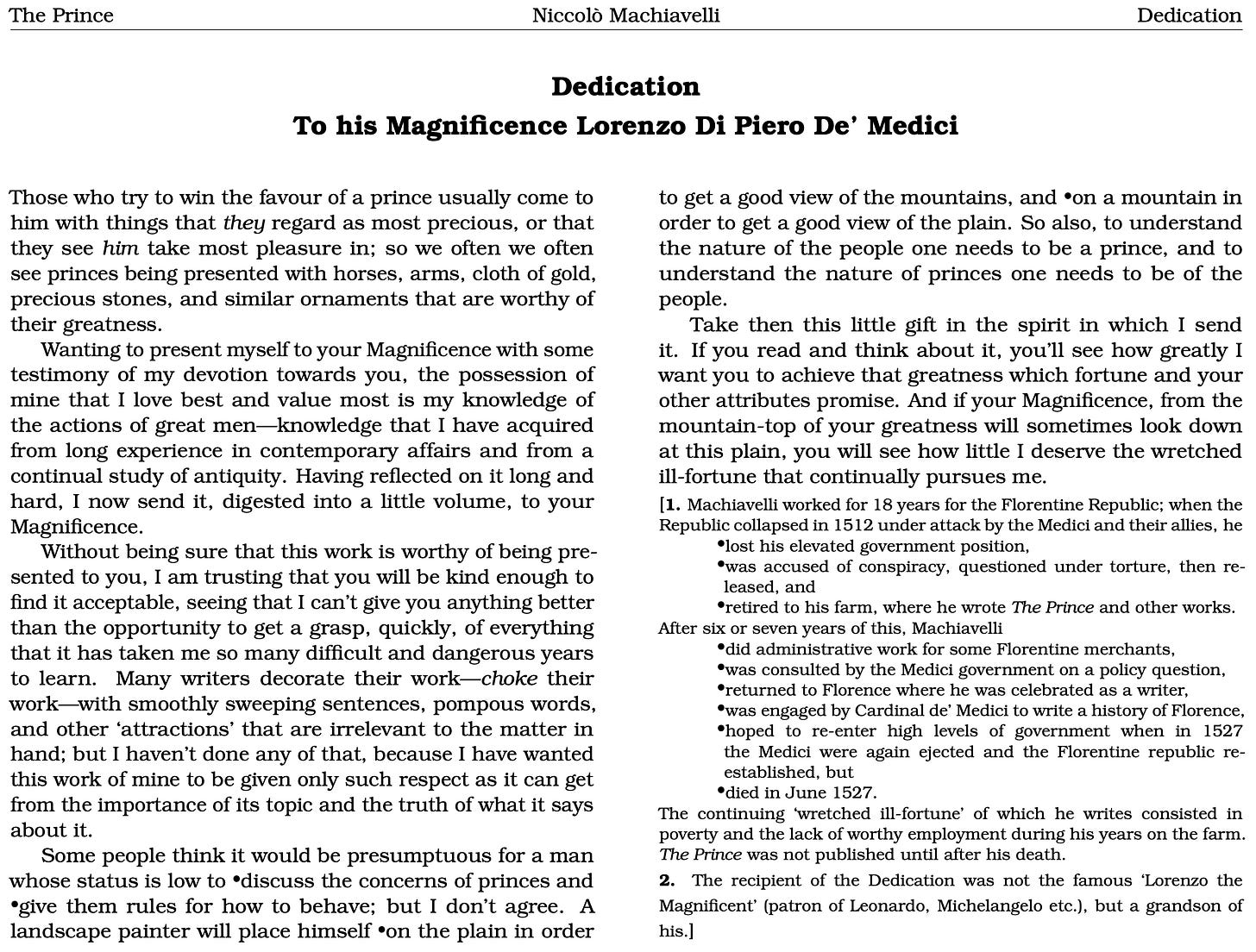Many thinkers worth reading wrote in past centuries:
- 1600s: Bacon, Hobbes, Descartes, Spinoza, Locke, Leibniz
- 1700s: Berkeley, Hume, Rousseau, Smith, Kant, Burke, Bentham
- 1800s: Schopenhauer, Mill, Sidgwick
Some of them wrote in English and their texts are usually presented in the original, even when they use archaic spelling, punctuation, and style. (This is in contrast to foreign-language works which are often translated to a modern style.)
For example, in the past there were more uses of the comma, such as
- Before any relative clause:
- Dickens: “The objects he had lately pursued, turned worthless beside her”
- Melville: “This august dignity I treat of, is not the dignity of kings”
- Before any clause starting with “that” for any reason:
- Austen: “It is a truth universally acknowledged, that…”
- After any clausal or compound subject as far as I can tell:
- J Robertson: “Whoever is capable of forgetting a benefit, is an enemy to society”
And these examples are from the 1800s. The situation was worse in prior centuries when punctuation was mainly prosodic rather than syntactic, i.e. it followed rules of rhetoric rather than logic. For example, Daines’s Orthoepia Anglicana (1640) advised using a comma to indicate one unit of spoken pause, a semicolon for two, and a colon for three. Before widespread literacy, most consumers of a book would be listening to it being read aloud, so prosodic punctuation made more sense, but as literacy rates improved, more consumers read books silently and it made sense to punctuate based on the logic of the sentence.

The website EarlyModernTexts.com modernizes many works (including works from all of the authors listed at the start of this post) so that the meaning can be understood more quickly and accurately. The texts were written by the late Jonathan Bennett and are often assigned to undergrads. Bennett explained his methods in “On Translating Locke, Berkeley, and Hume into English.” Usually I refer to his texts as “modernized” but “translated” maybe makes it more clear that the texts aren’t abridged; his text will line up with the original work paragraph by paragraph and typically sentence by sentence. He doesn’t always indicate omissions but is transparent about any text added.
He has more details on his website about how the texts are modified. Two examples of modernization:
Hobbes: as all sorts of manufacture, so also malice increaseth by being vendible.
Modernized: malice, like everything else made by men, increases when there is a market for it.
Hume: Every one will readily allow, that there is a considerable difference between the perceptions of the mind, when a man feels the pain of excessive heat, or the pleasure of moderate warmth, and when he afterwards recalls to his memory this sensation, or anticipates it by his imagination. These faculties may mimic or copy the perceptions of the senses; but they never can entirely reach the force and vivacity of the original sentiment. The utmost we say of them, even when they operate with greatest vigour, is, that they represent their object in so lively a manner, that we could almost say we feel or see it: But, except the mind be disordered by disease or madness, they never can arrive at such a pitch of vivacity, as to render these perceptions altogether undistinguishable. All the colours of poetry, however splendid, can never paint natural objects in such a manner as to make the description be taken for a real landskip. The most lively thought is still inferior to the dullest sensation.
Modernized: Everyone will freely admit that the perceptions of the mind when a man feels the pain of excessive heat or the pleasure of moderate warmth are considerably unlike what he feels when he later remembers this sensation or earlier looks forward to it in his imagination. Memory and imagination may mimic or copy the perceptions of the senses, but they cannot create a perception that has as much force and vivacity as the one they are copying. Even when they operate with greatest vigor, the most we will say is that they represent their object so vividly that we could almost say we feel or see it. Except when the mind is out of order because of disease or madness, memory and imagination can never be so lively as to create perceptions that are indistinguishable from the ones we have in seeing or feeling. The most lively thought is still dimmer than the dullest sensation.
Notice that he omits the “landskip” sentence as a tangential flourish.
The texts all start with an explanation of his syntax:
[Brackets] enclose editorial explanations. Small ·dots· enclose material that has been added, but can be read as though it were part of the original text. Occasional •bullets, and also indenting of passages that are not quotations, are meant as aids to grasping the structure of a sentence or a thought. Every four-point ellipsis . . . . indicates the omission of a brief passage that seems to present more difficulty than it is worth. Longer omissions are reported on, between [brackets], in normal-sized type.
Below are some examples of the opening pages of a few of the texts (there are EPUB/MOBI files as well). Selected texts have been narrated into audiobooks, including Leviathan, The Prince, A Vindication of the Rights of Women, Descartes’s Meditations, Hume’s Enquiry, and Locke’s Second Treatise of Government.






The EarlyModernTexts versions are what I read when I had to do my comprehensive history exam in grad school. I recommend them.